SITE PATH
ONE ENERGY FEED

SUBSCRIBE
CONNECT WITH US
News Filters

As a company dealing in power and energy, economic inflation plays a role in our projects. The savings we’re able to offer Wind for Industry® customers are determined by considering the estimated energy production of the turbine(s), the rate the customer is currently paying their utility, and something called Net Present Value, or NPV.
In this week’s Wind Study, you’ll learn about the ways One Energy prices projects, and what NPV means for the value of a project over the course of its 20+ year life.
🔗Download the homework questions here and come back Friday to check your math!
Be sure to share this educational series on Facebook and Twitter.
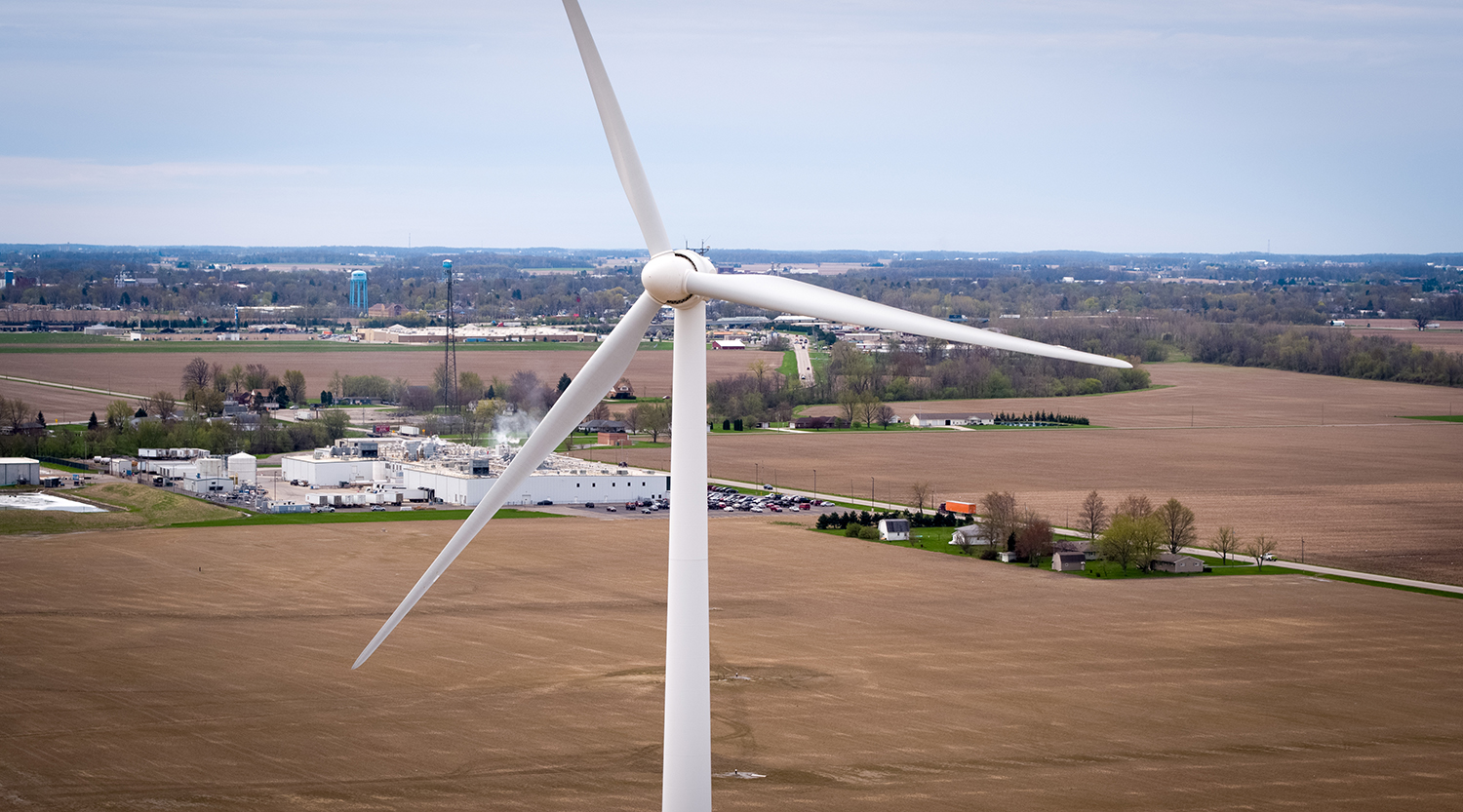

Think you’ve got the hang of how net metering works? Let’s find out.
In this week’s Wind Study homework questions, we discussed how wind turbines can be installed “behind the meter” to directly power facilities. These projects can utilize a policy called net metering, which impacts how One Energy customers are billed for electricity. We then asked for your help with math problems to determine net energy purchased from a utility, as well as some cost calculations.
To download the homework questions, click here.
To check your work against this week’s homework answers, click here.
And be sure to share this educational series on Facebook and Twitter!
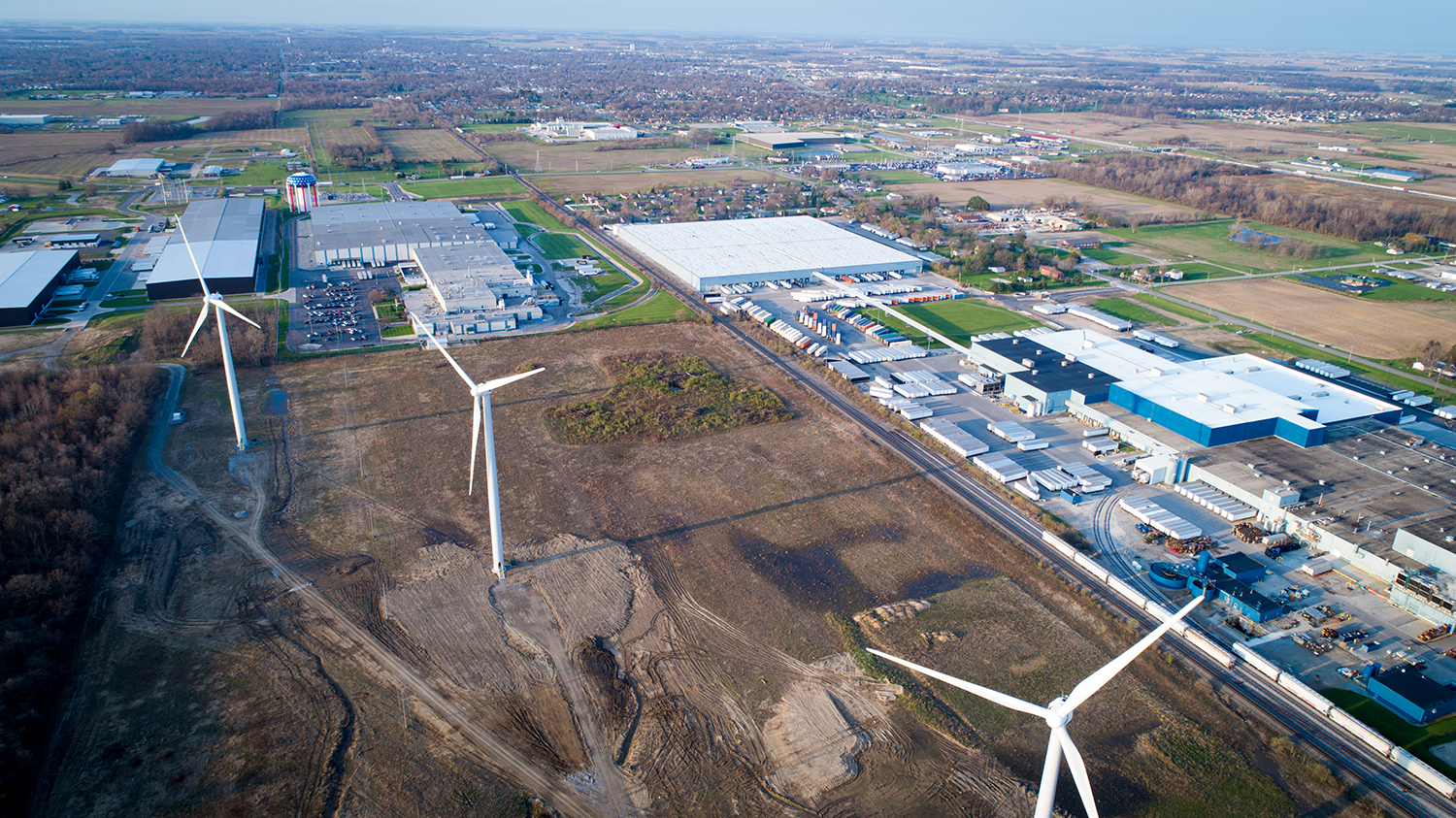

As you know by now, One Energy has various ways of capturing weather and wind data. In the last few Science Shorts, we explained our weather station, MET pole, and the instrumentation used to measure wind. Today, follow along as Erica explains another tool we use: the LiDAR unit!
LiDAR stands for Light Detection and Ranging. LiDARs are relatively small, portable instruments, which come in handy when we need to measure wind data at a potential customer’s site: instead of installing a tall MET pole, we can transport a smaller, more mobile LiDAR unit!
Watch as Erica explains how these units capture data using light beams and lasers along with atmospheric aerosols – and find out which instances One Energy chooses to deploy a LiDAR unit over other ways of obtaining wind data.
Subscribe to our YouTube channel and don’t miss any future Science Shorts!
And be sure to share this educational series on Facebook and Instagram!

What does tying knots have to do with wind energy construction? More than you might think!
The Figure 8 style knot is used by One Energy technicians for taglines when erecting wind turbines, pulling electrical cable in underground conduits, attaching rope to carabiners, and when raising and lowering tools in tower.
In this episode of Technician Talks, join Emily as she demonstrates the basic Figure 8 Knot, plus a few variations. You’ll learn how to tie a Figure 8 Knot, plus a Figure 8 on a Bight and a Figure 8 Retrace, in this short, informative video.
Technician Talks can also be found on our LinkedIn, Facebook, and Twitter feeds– and be sure to subscribe to our You Tube channel for more One Energy content!

It’s amazing how easy it is to accidentally introduce salary bias into your company. One Energy has worked very hard to identify the places where we could accidentally incorporate a bias into our hiring and compensation of team members. It’s for this reason that we do not negotiate salaries for entry-level employees.
Many companies that I have worked for identified a salary “range” for offers to entry-level employees, where hiring managers and human resources departments had flexibility to decide what each candidate is worth. These managers factor in the degree, school, performance at the school, resume, experience, and the interview to decide where in that range to price the offer. The result is often that students from high-income backgrounds and expensive schools start with higher compensations and maintain that higher compensation throughout their career.
Because I went to the University of Michigan, I was paid more as an entry-level employee than many of my counterparts. My offer from another company was increased because I scored well on their psychological profile software. Looking back, none of that made sense.
Basing the salary on the degree does not make sense. Salary should be based on the position the employer believes the candidate is qualified to fill. The prestige of the school often favors well-off students and is biased against those who started from a socially disadvantaged position. Performance at a school tells you how well a candidate did in that culture, not how much knowledge they retained or how well they will do in your company’s environment.
It is also far easier for an affluent student to pad their resume than it is for an equally smart, economically disadvantaged student to do the same. (How often do we hear of well-connected parents getting their kid an internship at their friend’s company?)
For the student who grew up with rich parents, the interview process is more familiar as well. Hell, I went to cotillion as a kid – so you better believe I was more accustomed to a formal, professional setting than smarter students who worked their way through high school and college.
The school I attended, my well-rounded resume, and my ease with the formalities of interviewing – none of these things meant I was a better candidate. While sure, I personally believe I was a stronger-than-average applicant, there was nothing in my interview processes that gathered ample objective information for the employer to determine if that was the case.
So at One Energy, we take a different approach. Here, entry-level hiring is a yes or no decision. If it’s a yes, there is a standard offer that is not negotiable. For entry-level field engineers, for example, we use the national average salaries for civil engineers, electrical engineers, and mechanical engineers, then calculate the total average to arrive at our offer number (we update this calculation annually).
Then, we judge them like crazy.
Yes, we judge our new hires. But we only judge them on what they do in their professional capacity while they work for us. We judge them both qualitatively and quantitatively based on their work. And when they demonstrate value, we adjust their compensation rapidly.
We conduct quarterly reviews of their salary and we adjust their salary each quarter based on what we would pay them in light of all information we now have. Some new-hire salaries increase rapidly as they prove they are top performers. Some grow at a less rapid rate. And we grow salaries without artificial caps. If a field engineer gets a 30% raise the first year, that’s a great thing. They earned it, and it had nothing to do with anything other than their performance at One Energy.
The best part is that we have found that when we explain this policy to prospective new hires, the strongest candidates love it and often take a much lower initial compensation from us than what they’re being offered elsewhere. And they’re also often the ones who end up making far more after a year than any of their other competing offers.
Evidence this approach works? We are often surprised who the best performers end up being. Had we set individuals’ compensation based on our original, pre-employment view of them, we would have been wrong many times.
We’re proud to report: none of our current team members attended cotillion growing up, and we’re doing just fine.
Jereme Kent is the CEO of One Energy.

Hope you’re not afraid of heights! This photo was taken from ~320 feet in the air – all while our Corporate Communications Manager and in-house photographer Hank was standing on the ground.
One Energy’s drone equipment helps us expand our abilities for tasks like turbine blade inspections and capturing breath-taking photos of our Wind for Industry projects.
We were able to determine the approximate height this photo was shot from by using metadata. The “raw” version of this photo (or unprocessed version) contains data stored in the file. This data includes information like the time and date the photo was taken, the drone’s altitude, and the photo’s GPS location – it’s all called metadata.
By comparing this metadata with our site survey information, One Energy was able to calculate the height of ~320 feet! Here’s how:
The altitude stored in the photograph’s metadata is measured in “feet above sea level”. Since we also know the GPS location of this photo from its metadata, we can determine the site elevation of this specific turbine’s location and compare it to photograph’s altitude. The result tells us how high in the air our drone was when it captured this photo!
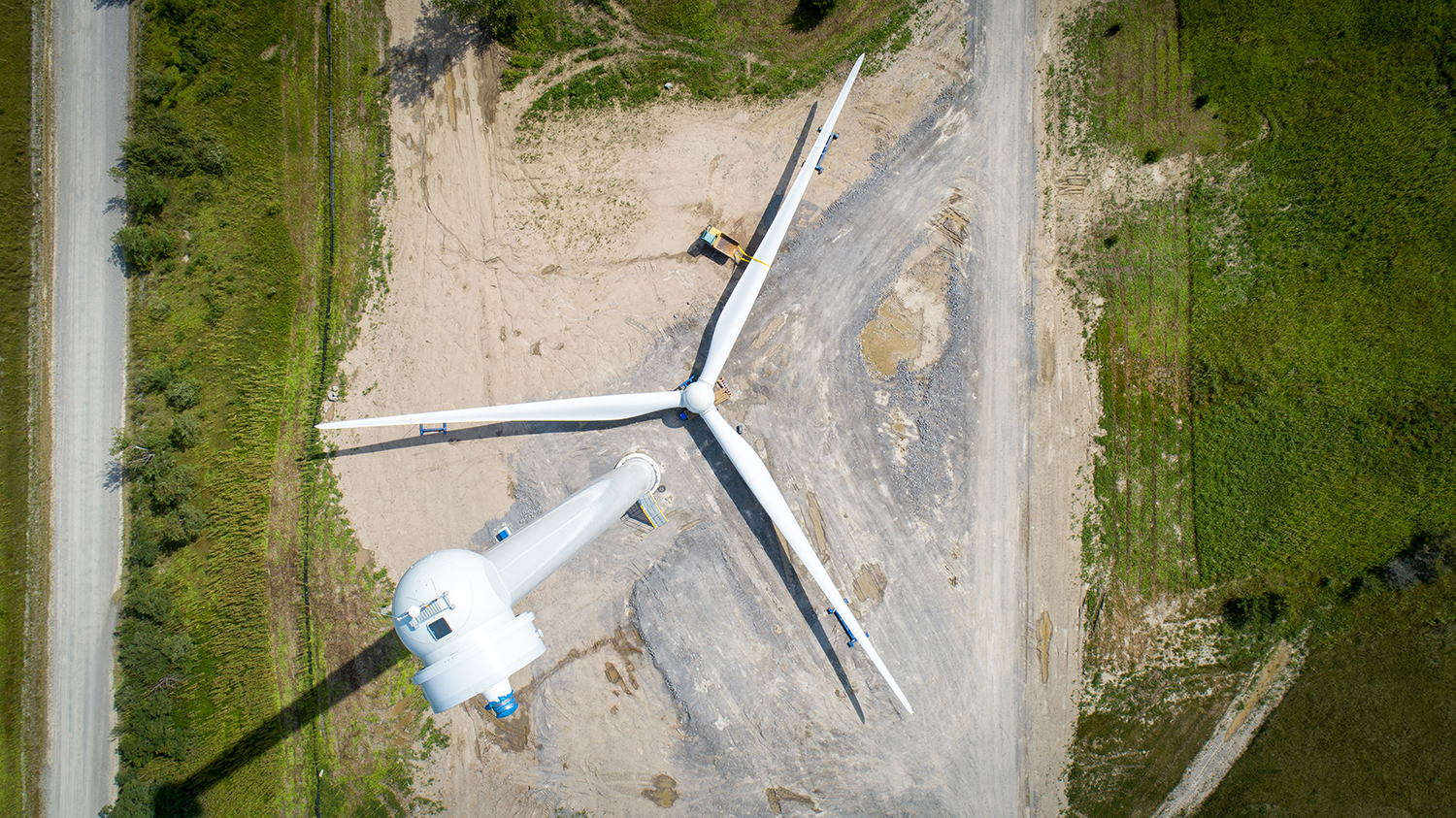

One Energy’s projects are different from typical wind farms because they are installed “behind the meter,” and directly power customer facilities. Some One Energy customers take advantage of a policy called net metering, which means the customer is only billed by the utility for the net electricity consumed by their facility.
In this week’s Wind Study, learn more about how net metering works and use math (net values and percentages, specifically) to answer related homework questions.
🔗 Download the questions here and check back Friday for the answer.
You can also find this educational series on Facebook and Twitter.
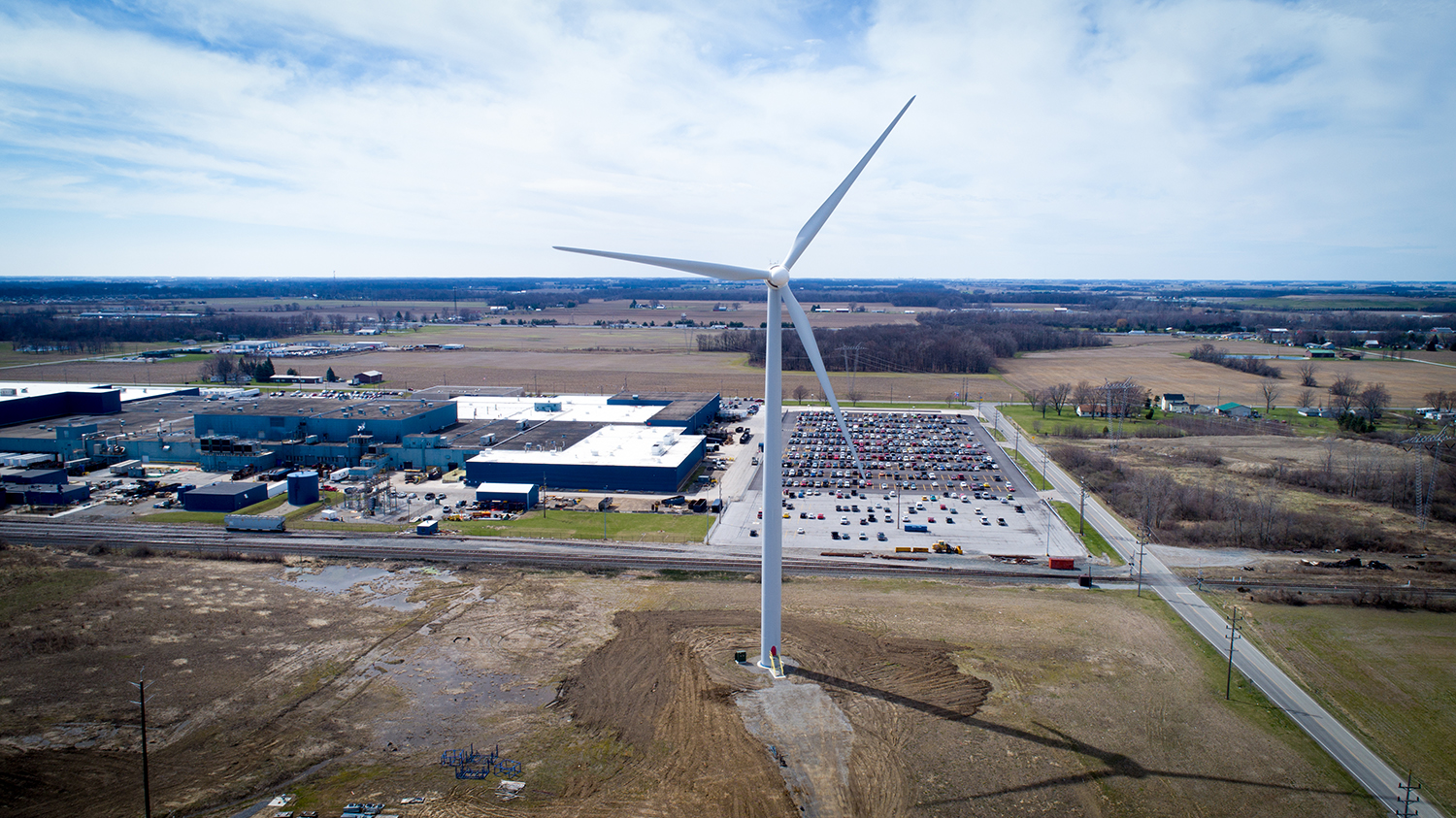

Think you solved our scholarship scenario? Find out in today’s Wind Study answer!
On Monday, we asked you to figure out the total amount of Megawatt Scholarship money awarded through 2020 and to develop an equation to figure that total in any given year. If you arrived at the correct answer, you’ve got some real accounting expertise!
Download the homework answer here and check your math!
And be sure to share this educational series Facebook and Twitter.
For more information on Megawatt Scholarships, head to www.megawattscholarships.org.


Sexy. The 1986 edition of Webster’s Third New International Dictionary gave two definitions of sexy: “1. spicy or racy with references to or portrayals of sexually stimulating matter” and “2. sexually suggestive, erotically stimulating.” Since then, Merriam-Webster has added “genuinely attractive or interesting” to the definition and gives the example of “a sexy stock.” Other dictionaries include terms like “exciting” or “glamorous.”
Somewhere along the way, “sexy” morphed its way into the business world as being synonymous with “investment-worthy.” Sexy businesses (not to be confused with sex businesses, the definition of which really hasn’t changed in thousands of years) attract investors and generate buzz. They are where the press focuses attention and where social media posts explode – and the money follows.
I wonder how long this definition of sexy can be sustained. If we only focus on the sexy things, what happens to the decidedly un-sexy necessities? What happens to the basics that societies need to survive and thrive? Infrastructure isn’t sexy, but we all use it every day. Electricity isn’t sexy, but no one is happy when the power goes out. Sustainability isn’t sexy, but climate change requires our attention. Equitable economics isn’t sexy, but bringing people out of poverty is a must.
Maybe we need to shift our interpretation of what is sexy so that we can dedicate the time, energy, and capital to efforts that can truly sustain our society and our planet – towards efforts that solve real, immediate, critical world problems.
There is no doubt that “decarbonization of the distributed power grid” is not listed in Roget’s Thesaurus under “sexy.” But it’s extremely important, and it’s what we do at One Energy. We focus on the .6% of U.S. electricity consumers who account for 26% of the consumption of electrical power, and we provide solutions that can dramatically reduce their carbon footprint. We do it as a business that meets 10 of the United Nations’ 17 Sustainable Development Goals. We do it with an executive team that’s 80% women, in a stunning, light-filled, collaborative workspace that promotes health and wellness in multiple ways. We do it while treating our people well. We are focused every day on doing the right thing for our customers, our investors, our people, and our planet. It is incredibly exciting stuff, but it’s definitely not glamorous.
Is One Energy sexy by current standards? I certainly think it is. Tackling the big problems. Treating employees well. Reducing the carbon footprint. Doing the right thing. Maybe we could start to define “sexy” in a different way. I’ll reach out to Merriam-Webster.
Anne Bain is the Head of Accounting at One Energy.

This week’s Wind Views photo features a Wind for Industry project located in Findlay, Ohio. The two 405-foot turbines (measured from tower base to blade tip) together provide up to 3.0 MW of electricity to directly power a local manufacturing facility.
At One Energy, we value the communities where we install Wind for Industry projects. And our wind turbines represent our customers’ commitment to these communities as well.
One example of this commitment to community is the Megawatt Scholarship program. For every One Energy turbine installed, one $5,000 scholarship is awarded every year to a graduating senior in the community. That means $100k in scholarships are available to the Class of 2021!
Visit www.megawattscholarships.org to learn more about eligibility requirements and to apply! Applications are due March 6.
And be sure to share on Twitter, Facebook, and Instagram!
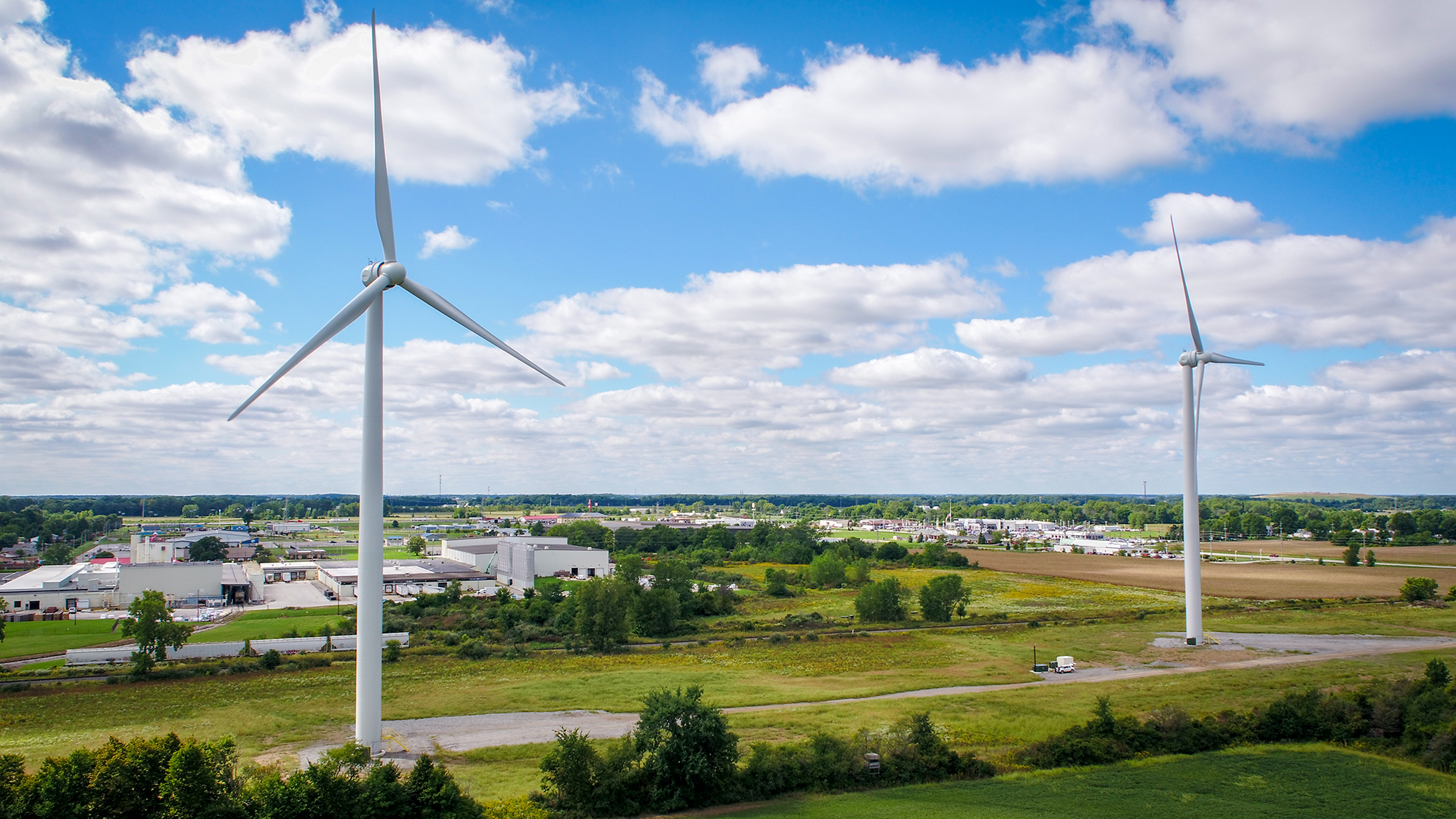
DCIM101MEDIADJI_0004.JPG




